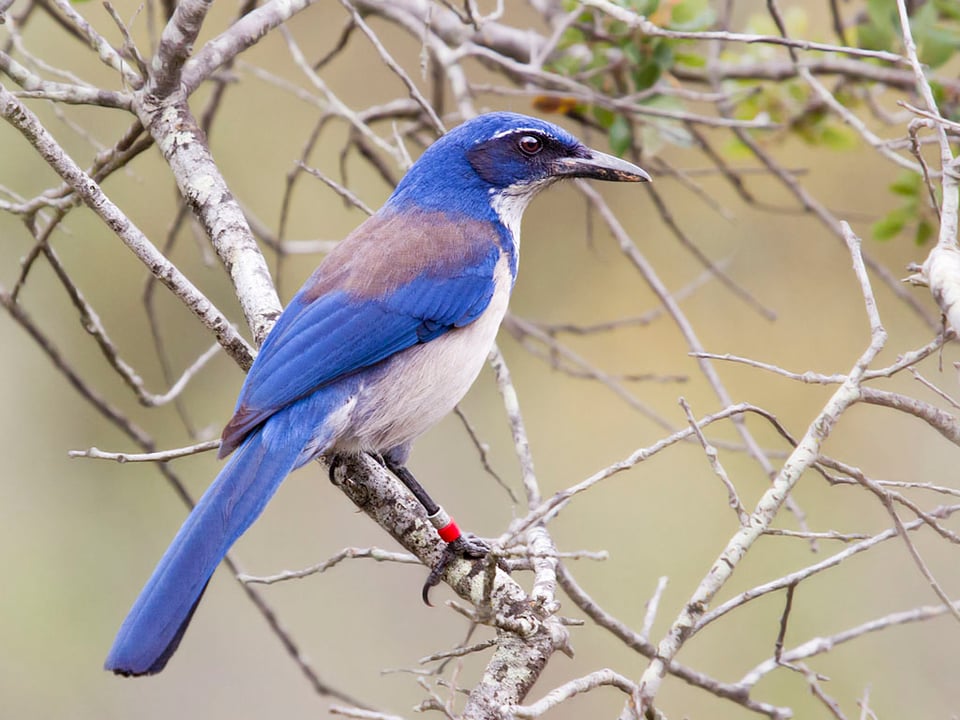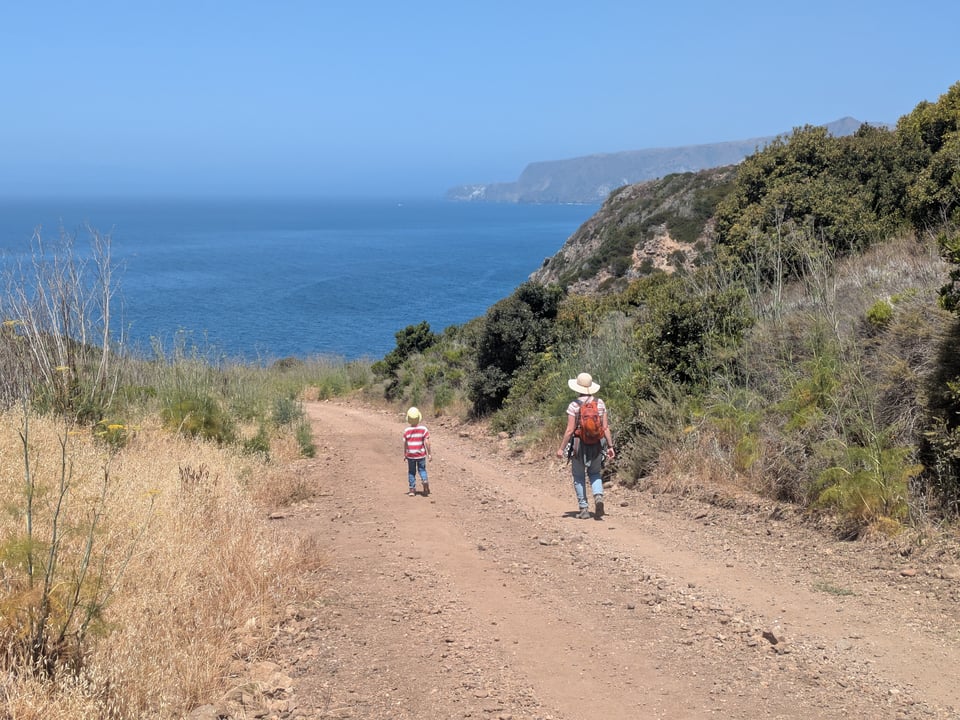Bird of Passage: July 2025
Among birders, California's Channel Islands are famous for one thing...
I was thinking of writing about the black-crowned night heron I spotted in the creek adjacent to the school garden I recently took over management of, and how it felt like a good omen. But then last week I mentioned to someone how excited I was to have just seen island scrub jays, and he said, “Are you going to write about that? You should write about that.” So Tim, this is for you.
I am a lifelong fan of national parks (you might even say I’m a national park buff, if you’re into The West Wing). Our big family vacations are often planned around taking our son to new-to-him national parks, and I still deeply regret not finding a way to get to Isle Royale National Park when I lived fairly close by in northern Wisconsin. So when we started thinking about a family trip to Los Angeles this year, taking advantage of the fact that I had to go there anyway for a work conference, I suddenly wondered… just how hard would it be to get to the Channel Islands?
Channel Islands National Park is an archipelago of islands off the coast of southern California. The Channel Islands have been called the “Galapagos of North America” due to the unique plants and animals found there, but because (like Isle Royale) it’s only accessible by boat, Channel Islands National Park is among the least-visited national parks in the contiguous 48 states. Among birders, of course, the Channel Islands are famous for one thing: They’re home to a specific species of bird found nowhere else in the world, the island scrub jay.

And it turns out, it’s not that hard to get to the islands. You just buy a ticket with a park concessionaire that operates boats out of Ventura, California, and… go. And on Sunday, June 22, that is what my spouse, seven-year-old son, and I did.
It’s a ninety minute ride each way, through some fairly heavy surf, and the kiddo got a little seasick on the way out. But Santa Cruz Island was magical — dramatic rocky coastline, huge stingrays swimming back and forth through the clear water under the boat dock, and yes, scrub jays. I haven’t kept a life bird list in years, but this is one lifer I was still pretty tickled by, because it’s a bird I never dreamed I’d actually get to see.

When this email goes out, I’ll be on a second, separate quick trip, this time to the Oregon coast to celebrate my spouse’s and my tenth wedding anniversary while our kid is at sleepaway camp. Then it’s back to real life — writing, my school garden job, kid summer activities, house and garden chores, and, yes, volunteering and activism. There is a lot to be sad and angry about right now, and I’m not going to stop engaging with all of that. But I’m trying to remind myself that it's also okay to continue enjoying the things in life that are good… like island scrub jays.
Words About Birds
I have a feature story in the summer issue of Living Bird, the Cornell Lab of Ornithology magazine, about some really cool research into song sparrow genomics. The really short version: Scientists have sequenced the genomes of almost all 25 (!) song sparrow subspecies, found in a range of habitats across North America; they’ve identified specific genes linked to individual subspecies’ adaptations for their local environments; and they’ve connected that to data on how different populations are faring under climate change. It’s really cool!
And for The Revelator, I wrote a piece about the Trump administration’s proposal to completely cut all funding for the Bird Banding Laboratory and the Breeding Bird Survey (both part of the USGS Ecosystems Mission Area), and what that would mean for bird research and conservation in the U.S. I wrote about the history and importance of both of these programs at great length in my book, and the idea of losing them is devastating. Call your legislator, I guess!
That was depressing, so can I interest you in some foraging flamingos? Using slow-motion videos and 3D-printed flamingo beaks, scientists have determined that when flamingos dip their beaks in the water and pulse them rhythmically back and forth, they’re creating tiny vortices in the water that suck tiny food particles right into their mouths. Birds! They’re amazing!
I also liked this CNN story about the street smarts of Australia’s sulphur-crested cockatoos. I remember spotting these birds in downtown Sydney when I visited Australia myself many years ago, but I didn’t know much about them at the time. Turns out they’re actually really savvy at surviving in urban environments and have even figured out how to open trash cans and, now, drink from public drinking fountains!
Finally: have you ever wondered why birds are so noisy first thing in the morning? One theory is that the calm, damp early morning air helps sound travel farther, but apparently a new study has ruled that possibility out using extensive recordings of birdsong from India. Instead, a possible explanation is that birds are just reminding each other about their territorial claims after resting overnight and communicating about finding food.
Book Recommendation of the Month
Almost Everything: Notes on Hope by Anne Lamott. This book was published back in 2018, but, uh, the message of trying to hang onto hope through difficult times is just as relevant today (maybe even more so). Lamott is Christian and references her faith every now and then, but this isn’t really a religious book, and non-Christians (like me) will still be able to appreciate it. If a collection of smart, down-to-earth essays on the best and worst of human nature and how we can all muddle along in this imperfect world sounds like something you could use right now, check it out.
Keep taking care of yourselves and fighting to make the world a better, kinder place! I’ll be back with more new writing next month. If you know someone who might enjoy this newsletter, I hope you’ll consider forwarding it to them.
Add a comment: